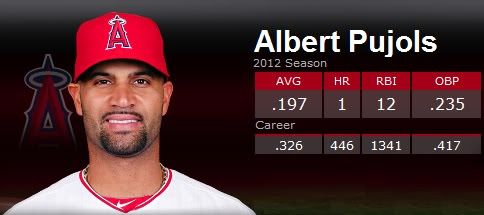![]() General manager Neal Huntington and the Pittsburgh Pirates have been busy this offseason, making small moves for players they hope will play to their maximum potential in 2015.
General manager Neal Huntington and the Pittsburgh Pirates have been busy this offseason, making small moves for players they hope will play to their maximum potential in 2015.
The smartest moves the Pirates have made occurred Monday when Bill Brink of the Pittsburgh Post-Gazette reported the Pirates acquired utility man Sean Rodriguez via trade with the Tampa Bay Rays and designated first baseman Gaby Sanchez for assignment.
The 29-year-old Rodriguez batted just .211 in 96 games for the Rays in 2014, which is nothing to write home about. However, his 12 home runs and 41 RBI were both career-highs.
![]()
A seven-year veteran, Rodriguez owns a career batting average of .225 in 1,641 at-bats. His busiest season came in 2011, when he played in 131 games and batted .223 for the Rays.
Primarily a middle infielder, Rodriguez gives the Pirates the opportunity to rest players such as Neil Walker and Jordy Mercer when they need a day off.
In reality, he can fill in at any position when a player needs a rest day for the Pirates in 2015, and manager Clint Hurdle can be confident with him in the lineup.
What makes him so valuable as a backup or a utility man is the fact he can play any position in the field, as he has seen playing time at every position except catcher throughout his career.
If Rodriguez blasts 12 home runs as a utility man for them in 2015, they would gladly take that, but he is capable of achieving more given the right number of at-bats.
Rodriguez collected 237 at-bats in 2014, and although he totaled just 50 hits, more than half of them went for extra bases (28 of them, to be exact).
With the move for Rodriguez came another move to make room on the team’s roster: designating first baseman Gaby Sanchez for assignment.
![]()
Sanchez was a promising player a few seasons ago when he was a member of the Miami Marlins, blasting 19 home runs in back-to-back seasons between 2010-2011.
Sanchez has blasted just 21 home runs combined in the three seasons since, as his ineffectiveness against right-handed pitchers has led him to a role as a platoon player.
This was a promising move for the Pirates because it now leaves just two first basemen on the roster: Pedro Alvarez and Andrew Lambo.
Alvarez, who was the team’s everyday third baseman, will likely be the new everyday first baseman in 2015 while Josh Harrison takes over at the hot corner.
Although he missed 40 games due to injuries in 2014, Alvarez possesses tremendous power in the heart of the Pirates’ lineup, which is what they need. Platooning him with Sanchez probably wouldn’t have been as effective as leaving Alvarez in the lineup on a consistent basis.
Furthermore, Sanchez’s statistics even against left-handed pitchers were not impressive in 2014 like they were in 2013. He batted .333 in 102 at-bats against southpaws in 2013 but just .256 in 133 at-bats against them in 2014.
![]()
Sanchez’s numbers have consistently declined throughout his career, and as he is already 31 years old and set to become a free agent in 2016, the best option would be for the Pirates to trade him (the Pirates have 10 days to decide whether to trade or release him).
The Pirates became a better team Monday, from an offensive standpoint. While Rodriguez is not a standout player, he has proven he can play at the big league level, while Sanchez’s declining numbers have to be considered a concern for the Pirates.
*Statistics courtesy of Baseball Reference.
Read more MLB news on BleacherReport.com

